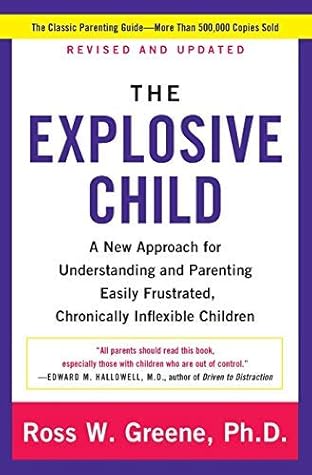More on this book
Community
Kindle Notes & Highlights
Read between
June 17 - June 25, 2023
Plan B involves solving a problem collaboratively, a process in which you and your child work together to solve the problems that have been setting the stage for challenging episodes and that have been so destructive to your relationship with each other.
Plan B consists of three steps, each containing ingredients that are crucial to the collaborative resolution of problems: the Empathy step, the Define Adult Concerns step, and the Invitation step. The Empathy step involves gathering information from your child to understand what’s making it hard for her to meet a particular expectation. The Define Adult Concerns step involves communicating your concern or perspective on the same problem, especially why it’s important that the expectation be met. The Invitation step is when you and your child work toward a solution that is (a) realistic
...more
The goal of the Empathy step is to gather information from your child to understand what’s making it difficult for them to meet a certain expectation.
The Empathy step gives your child a voice. Then they don’t have to scream—or exhibit any other concerning behaviors—to be heard.
The Empathy step begins with an introduction to the unsolved problem. The introduction usually begins with the words “I’ve noticed that . . .” and ends with the words “What’s up?”
After you ask, “What’s up?” one of five things is going to happen next: POSSIBILITY #1: The child says something. POSSIBILITY #2: The child says nothing or “I don’t know.” POSSIBILITY #3: The child says, “I don’t have a problem with that” or “I don’t care.” POSSIBILITY #4: The child says, “I don’t want to talk about it right now.” POSSIBILITY #5: The child becomes defensive and says something like “I don’t have to talk to you” (or worse).
Strategy #1: Reflective listening—simply saying back to the child whatever they just said to you—often followed by clarifying statements, like “How so?” or “I don’t quite understand” or “I’m confused” or “Can you say more about that?” or “What do you mean?” This is your default drilling strategy, and the one you’ll be using most often. If you’re drilling and you get stuck and aren’t sure what to say, reflective listening and clarifying statements are always a safe bet. Strategy #2: Asking questions beginning with the words who, what, where, or when. Strategy #3: Asking about the situational
...more
This highlight has been truncated due to consecutive passage length restrictions.
Adult concerns are related to why it’s important that an expectation be met, and typically involve one or both of two categories: How the problem is affecting the kid (health, safety, learning) How the problem is affecting others (health, safety, learning)
In this final step you and your child are working together to come up with a solution. It’s called the Invitation step because the adult actually invites the child to solve the problem collaboratively. The Invitation step lets the child know that solving the problem is something you’re doing with them (collaboratively) rather than to them (unilaterally).
To start this step, you could simply say something like “Let’s think about how we can solve this problem” or “Let’s think about how we can work that out.”
There are two criteria for gauging whether a solution is going to get the job done, and these criteria should be considered and discussed by you and your child before signing on the dotted line: the solution must be realistic (meaning both parties can actually do what they’re agreeing to do) and mutually satisfactory (meaning the solution truly and logically addresses the concerns of both parties).
Plan B consists of three steps or ingredients: The Empathy Step: Gathering information about and understanding what’s making it hard for your child to meet a given expectation. The Define Adult Concerns Step: Being specific about why it’s important that the expectation be met (how the problem is affecting the kid and/or others). The Invitation Step: Collaborating with your child to find a solution that is realistic and mutually satisfactory. There are two forms of Plan B, depending on timing: Emergency Plan B and Proactive Plan B. Because Proactive Plan B is far preferable, it’s been the
...more


